The Williamsburg that Paige Stevenson, 52, once knew is disappearing, one $16 cocktail, designer thrift store, and trendy outdoor food market at a time. Stevenson moved into the neighborhood in 1989 after her college graduation, hearing rumors of inexpensive rent and a culture accommodating to artist sensibilities—and budgets.
In the early 1980s, Williamsburg was a post-industrial neighborhood. By the 1990s, the neighborhood became an enclave for artists escaping gentrifying Chelsea and SoHo. Now, when most people think of gentrification, they conjure up images of Williamsburg (observe one New York Times article featuring photos of what locals were wearing outside of the newly-opened Whole Foods back in 2016). Perhaps that old school Williamsburg bohemia is already gone. Or maybe Stevenson is helping keep it alive, through a makeshift community space that doubles as an Instagram sensation.
In 1989 Stevenson paired up with three friends and found a glum 5,000 square foot apartment on 315 Berry Street, a clunky beige building with factories for bookbinding, painting, and framing on the first floors and a knitting and clothing factory (or “sweatshop,” as another tenant Noah Jemison, 75, who goes by Noah Jemisin, described it) on the third. It wasn’t easy living. They had to put up walls and install electricity. There was only one window, but luckily it faced south, which allows Stevenson to take care of a lush indoor garden today. For Stevenson, it was “empowering” to learn how to maintain the space and do construction on her own. Roommates, friends, and partners have come and gone, but she has lived in this lofty sixth floor apartment for 30 years.
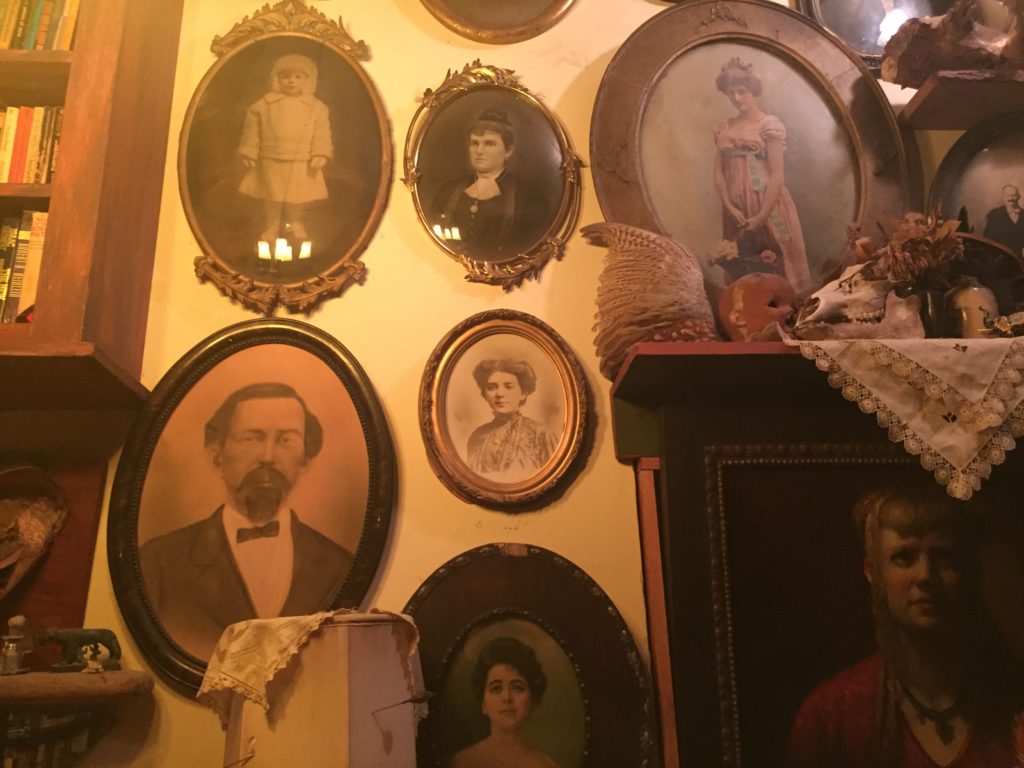
Stevenson’s cats prowl around the wood floor, sometimes swatting at each other. Between the greenery and the objects on the wall, Stevenson’s apartment is probably one of the best places to live in if you’re a New York cat: plenty to claw at. Observe old posters from friends’ performance shows, antique hip joints from old medical procedures, construction tools arranged like a phalanx on the walls, art pieces that she’s welded, baby doll heads arranged atop doilies, bicycle wheels, and miniature dragons. Her home is not just a home. It is the House of Collection.
Stevenson teams up with New York Adventure Club to welcome tourists and travelers of curiosity alike into her spacious yet cramped-feeling loft. All who step foot into her home are treated to a pleasant sensory overload, where every object has a history—or at least a hidden history that Stevenson wishes she could uncover—and no surface is left bare. Friends gifted her some things. Others are stuff that Stevenson found through her travels or discarded in New York. She talks about this one ornate suitcase that intrigued her on a street corner here in the city. She went to take a look inside, but didn’t find anything that pleased her. But next to it, in an anonymous-looking trash bag, she found a gorgeous set of tablecloths and linens that she took home. To this day, she pulls them out and uses them for a Thanksgiving or Easter dinner.
The idea of inviting strangers into your home with the frequency that Stevenson does might make some uncomfortable. But she’s used to sharing her space. Her apartment, she says, is less about the objects than “the people.” Friends still come and go freely in the home, even during our interview. She sees her home as a place of community outside of commercialization, which can be difficult to find in New York. It’s also a place of stability that honors sentimental objects, in contrast to the culture of the gig economy, where many young people are forced to sublet or rent for brief periods of time before moving somewhere else.
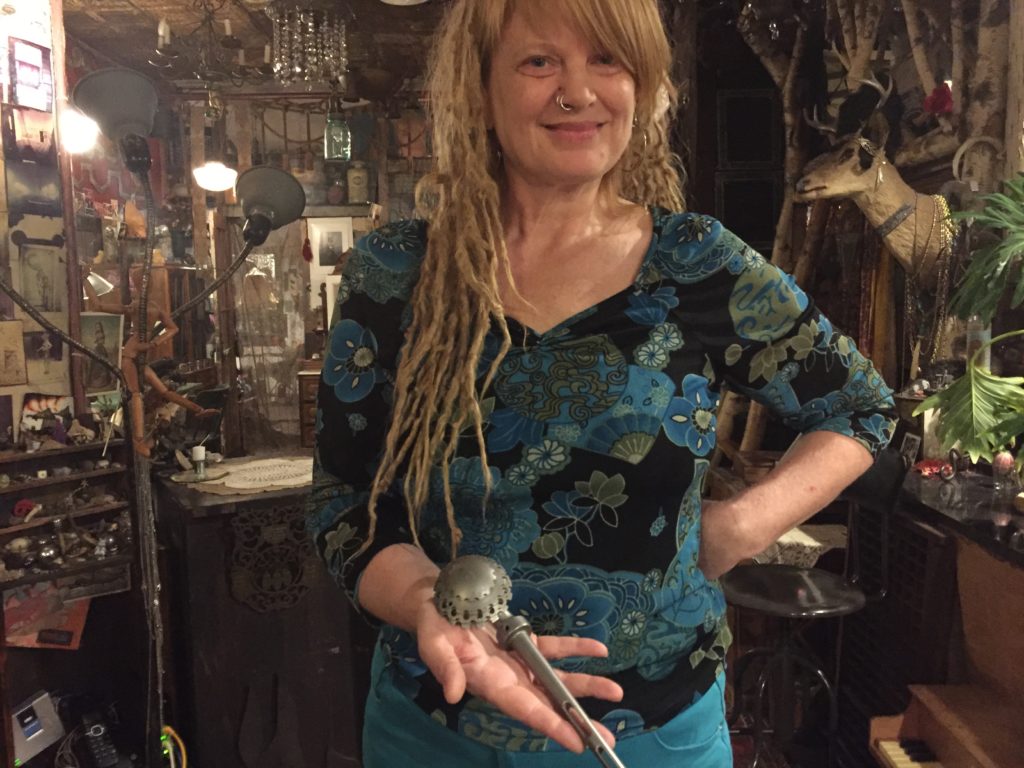
The bookkeeper and artist has a cheery, almost unassuming manner. She laughs, remembering the time an art club came to tour her home, and, as they name dropped famous artists, they told her that they appreciated that she didn’t know some of them. Stevenson says that she is not too “precious” with her collection. She’ll take a hammer off of her wall and use it. Being in her home is like being in the Cloisters and the Museum of Trash all at once. Stevenson describes it as her “sanctuary.”
She ended up needing to fight for the right to keep her home—for 12 years, she says, alongside several other tenants. As Williamsburg gained more real estate value over the years, management tried to drastically increase monthly rent or evict some tenants who had been given commercial leases and as a result they weren’t legally recognized as having residential rights.
The courts decided otherwise—and after a grueling process of appeals and a visit from a judge who confirmed that the apartments were indeed lived-in residences and not just commercial spaces, as management claimed—the tenants ended up winning rent stabilization in 2008. Now the building is the kind of place where stabilized residents can pay $600 per month for a large loft, and other, newer tenants can spend thousands for a studio or efficiency.
For residents like Stevenson who participated in the suit, the sustained effort to keep their homes was frustrating. One longtime sub-letter in the building, Ellen Goldin, however had the unusual situation of observing the court cases without being able to engage in them. She says that she could sense the friction.
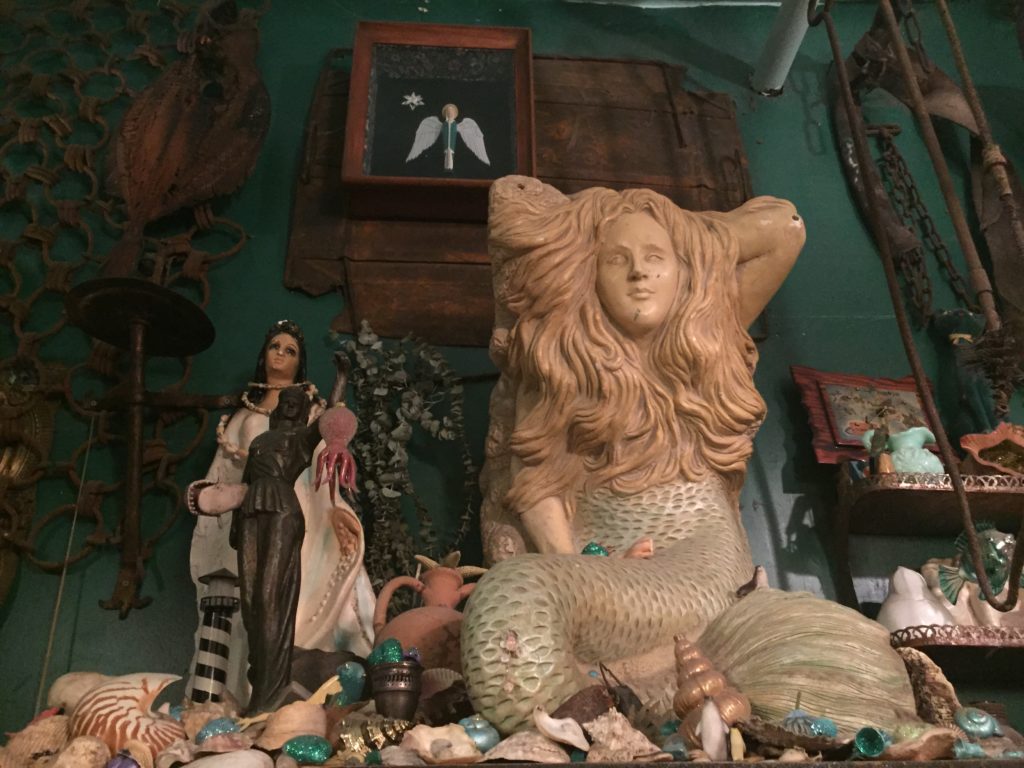
Goldin, who has been subletting a seventh floor apartment for 30 years, says the building on 315 Berry Street is far from unique in terms of its history of a precarious landlord-tenant relationships. In the late 1990s and early 2000s, Goldin says, she would go to gallery openings and hear many artists discussing “who their lawyers were.” Goldin says that those 12 years were difficult for building residents, particularly with tenants’ money invested in the lawsuit. Many residents would bicker with neighbors over small things, she says, because of stress and financial burden.
Not all Williamsburg artists were as lucky as those in 315 Berry Street. Many have been priced out over the years, and now, Goldin says that the “neighborhood is largely unrecognizable, except there’s still some of us old people around and we recognize each other.” She talks longingly about how much open space there used to be in Williamsburg, and the throngs of artists who would paint and draw outside.
Today, Goldin prefers not to leave her home on weekends because of overcrowding. Even if the neighborhood used to be “rough” and she needed to chain the hood of her car to the grill for fear of it being stolen, Goldin felt that Williamsburg was once an “urban wilderness” that bred a certain kind of ingenuity. Before management installed an elevator in the building, Goldin created a makeshift pulley system with rope that would carry the residents’ groceries upstairs as they walked the stairs.
Certainly, the building on 315 Berry Street attracted artists. The painter Noah Jemisin, who has had work displayed in the Metropolitan Museum of Art, moved there from Chelsea in 1981, when the rent was only $300 per month for a fourth floor loft that appears to be at least 2,000 square feet. According to Jemisin, the building was the first officially-designated artist residence in the Brooklyn neighborhood when it opened in 1980. Jemisin decided to move to the area because Chelsea was “already gentrifying.” He remembers the floors below him all being vacant, with the exception of a third floor factory, and that his room was the “coldest” in the building because it had “the last radiator on the rising.”
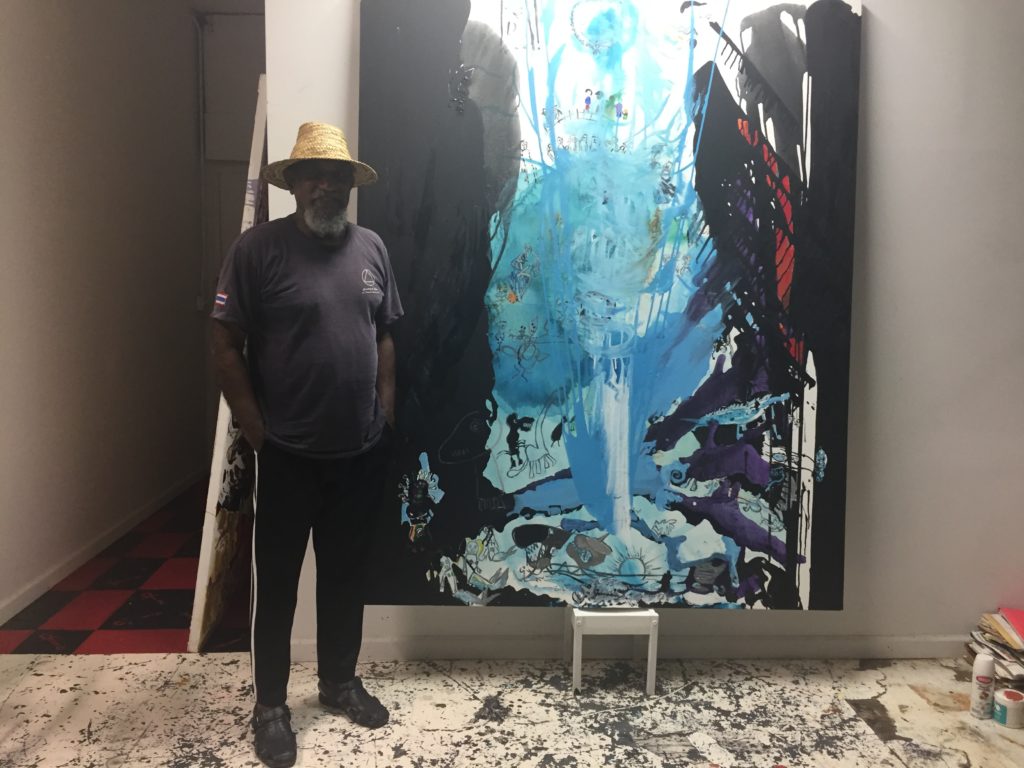
When Jemisin first walked into the loft, he says he knew immediately that it would be home. He points to the window, “this is why I bought it. The best lighting I’ve ever had.” Originally, his floor had three or four lofts, but over time, landlords broke them up into smaller rooms, which brought in a lot of young people. For Jemisin, “it killed the flavor of the floor” and made the environment more “like a college campus.” He says, “It used to be so quiet, and dark and secluded. I miss that part of it.”
As one of the original artists in the residency, Jemisin has always partially owned his space, so he never needed to go to court for rent stabilization. He pays $600 per month for a spacious loft, and the rent can only increase in small increments over time because he has rent control. Jemisin often looks out of his wide window, which practically covers the entire right side of his apartment. He points to where a nunnery used to be, and several community gardens, even a found-art display of a series of white doors that lined the street. Now, he stares at what’s taken their place, a building with a curved roof that almost looks like a pool. Jemisin says that, “Somebody made the roof wrong, it’s like a cup and it collects water and snow.”
Paige Stevenson does not actively gather new objects for her home. She’s at capacity. Now, she tinkers with what she has, often rearranging the items, which are “more than the sum of their parts.” As the neighborhood around feels more and more uprooted, she says, she feels that “We’re in a moment where we’re losing our cultural traditions.”

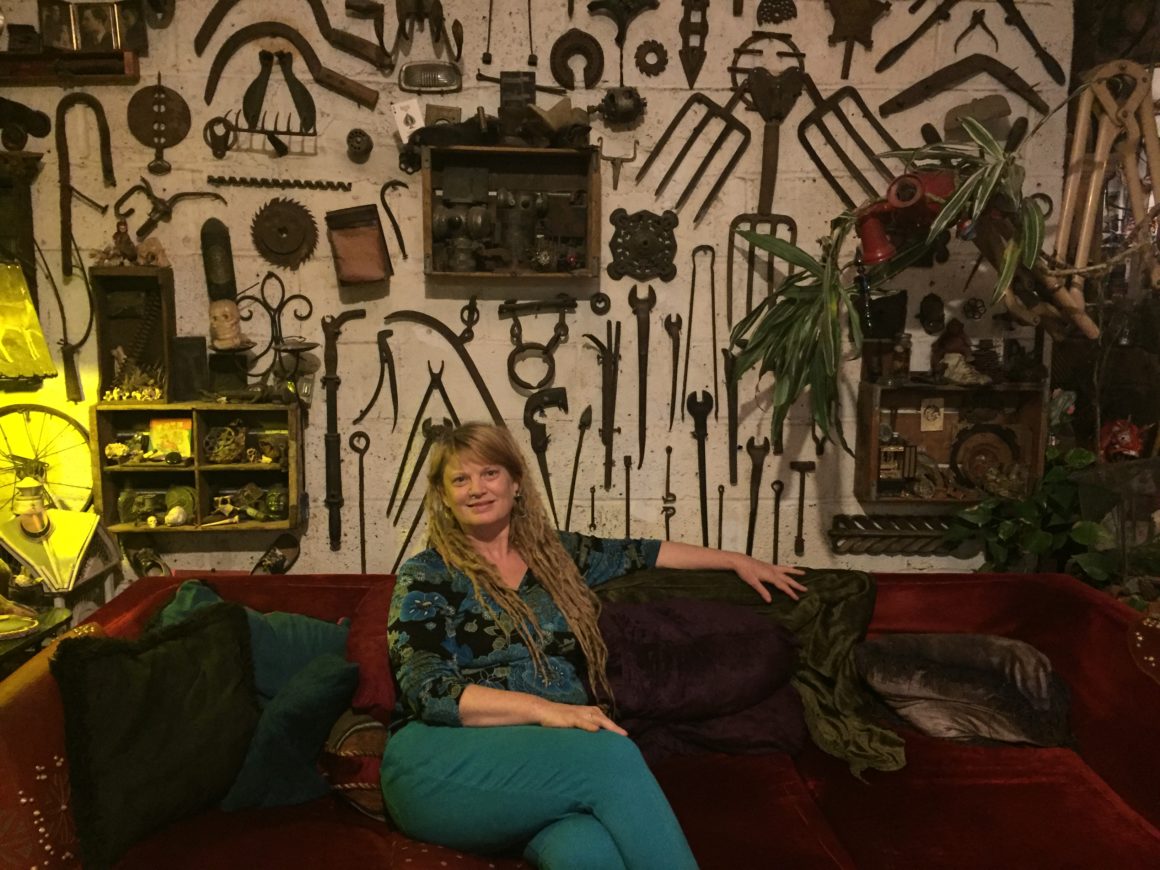
Leave a Reply